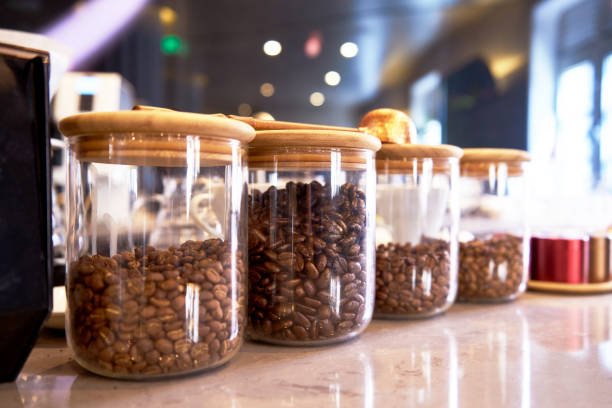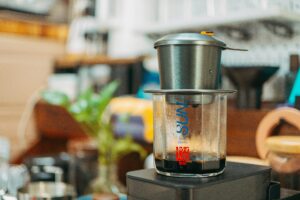For many of us, coffee is the elixir of early mornings, the muse of memorable conversations, and a dependable pick-me-up throughout the day. In the pursuit of the perfect cup, understanding how to handle and preserve coffee is as critical as knowing how to brew it. One common question in the realm of coffee storage is, “How long is coffee good for in the fridge?”

This post is designed to be your compass through the nuanced territory of coffee preservation. From whole beans to instant coffee lovers, my aim is to arm you with the knowledge to keep your coffee fresh for longer, and to guide you on the storied path of what to do when your favorite brew is at risk of spoilage.
Table of contents
Factors Affecting Coffee Shelf Life
The Essence of Sensory Decay
The complex bouquet of aromas and the nuanced spectrum of flavors in coffee are delicate and prone to degradation over time. Several elements can hasten the deterioration, including:
- Oxygen Exposure: Known to accelerate the staling process, oxygen infiltration happens even in tightly sealed containers over time, particularly with ground coffee. The greater the surface area of the beans, the more significant is the impact.
- Temperature Fluctuations: Refrigeration and freezer units are sensitive to temperature fluctuations, which lead to condensation. Repeated heating and cooling can affect coffee quality by causing changes in its chemical makeup.
- Moisture Content: High humidity can turn your carefully roasted beans into sullen, flavorless shadows of their former selves.
- Light Impact: UV rays can cause volatile compounds to break down, altering the taste and overall coffee experience.
- Heat Sensitivity: Roasted beans or ground coffee are also sensitive to heat variations, which can lead to unexpected flavor changes. Heat can strip the beans of their oils and introduce unwelcome moisture.
Beans vs. Ground Coffee
The storage guidelines for whole beans differ from those of ground coffee. The reason is quite simple: Surface Area. When you grind your beans, you increase their surface area exponentially, and with it comes exposure to all of the elements listed above. Here’s a quick guide:
- Whole Beans: Whole beans can maintain their freshness for up to 6 months when kept in an airtight container, away from heat sources and sunlight. The ideal place is a cool, dark pantry.
- Ground Coffee: Ground coffee starts losing its flavor and aroma within 30 minutes of grinding. While it may remain safe for consumption, the sensory experience may be compromised after 2-3 weeks of storage.
Different Coffees, Different Stories
Whole beans, ground coffee, and instant coffee all have their peculiar vulnerabilities when it comes to storage. Whole beans, for instance, maintain freshness better due to their lower surface area, which means less exposure to air and moisture. Ground coffee’s higher surface area makes it more susceptible to rapid aging. Instant coffee, although designed for longer shelf life, can still be compromised by poor storage conditions.
Optimal Storage Conditions for Coffee
The Ideal Environment
For maximum freshness, coffee should be stored in an airtight container, away from light, at room temperature, and in a relatively humidity-free environment. This helps retain the volatile oils and compounds that give coffee its nuanced flavors.
Airtight Excellence
A container’s main job is to keep air out. When exposed to oxygen, coffee becomes stale. Look for vacuum-sealed options or containers with a one-way valve that allows CO2 to escape without letting oxygen in.
The Light-walled Prison
Sunlight degrades the high-quality oils in coffee. Store it in an opaque container, such as stainless steel, ceramic, or glass, away from direct light.
Humidity’s Enemy
Moisture causes coffee to spoil and can even encourage mold growth. That’s why keeping any coffee in the fridge or freezer is a bit of a double-edged sword; the increased humidity fight with the cold, which can slow the rate at which coffee goes stale.
Temperature Notes
The ideal storage temperature for coffee is around 70°F (21°C). Extremes, whether hot (like above a stove) or cold (like the fridge), can damage the flavor and aroma of coffee.

Storing Different Coffee Types
Whole Beans
Store in the original packaging, airtight, and in the dark. If you have a grinder, grind only what you need and do so just before brewing.
Ground Coffee
Proceed immediately to airtight storage in a dark cabinet. The enemy here is the increased surface area of each granule.
Instant Coffee
This is often stored in glass jars or tins that are airtight. Keep it in a cool, dark place, and it can last for a remarkably long time.
How Long Can You Store Coffee in the Fridge?
When Cold Storage is Cool
Under specific circumstances, refrigerating coffee can be an appropriate choice to extend its shelf life. This applies mostly to home-roasted coffee, as it can be more susceptible to degradation due to not being vacuum-sealed. If the alternative might be throwing it away, cooling can be a good call.
The Proper Fridge Approach
If you choose to refrigerate coffee, do so with care. Ensure it’s in an airtight container, and it’s placed in the least moist part of the fridge, typically in a deodorized area away from other odorous foods. And remember, coming and going from the cold can cause condensation, so when taking out your coffee, allow it to reach room temperature before opening the container to prevent moisture from affecting the beans.
Signs Your Coffee Has Gone Bad
The Grim Tidings
There are distinct signs that your coffee should no longer end up in your cup:
Visual Clues
Mold spots, dust on coffee, or the presence of oily slicks on the surface can all indicate spoilage.
Aroma of Despair
Fresh coffee should fill the room with an inviting fragrance. If it smells rancid, sour, or akin to burnt wood, it’s gone bad.
The Taste Test
A distinctive change in the flavor—a loss of complexity or the presence of sour notes—indicates the coffee has reached the end of its functional shelf life.

Tips for Maximizing Coffee Shelf Life
The Proactive Preservation Playbook
There are several ways to keep your coffee fresher for longer, and here are just a few strategies:
Vacuum Sealing
Invest in a good vacuum sealer. It’ll suck out the air and seal in the flavor remarkably well.
Buy Freshly Roasted
Try to buy only what you can use in the next 2-3 weeks. Freshly roasted coffee stands the best chance against the ravages of time.
Keep It Fresh, Keep It Sealed
Never leave your coffee open to air and don’t be tempted by the convenience of the tin tie when it comes to the coffee bag. Always transfer to airtight storage immediately.
Conclusion
In the ballet of coffee storage, understanding the intricate steps is as important as knowing the dance itself. By implementing the guidelines offered here, you’ll be poised to savor a richer, more satisfying cup. Share your own experiences and coffee storage wisdom in the comments below, and encourage others to join the conversation. Your perfected storage ritual might just be the inspiration for someone else’s brewing adventure.






